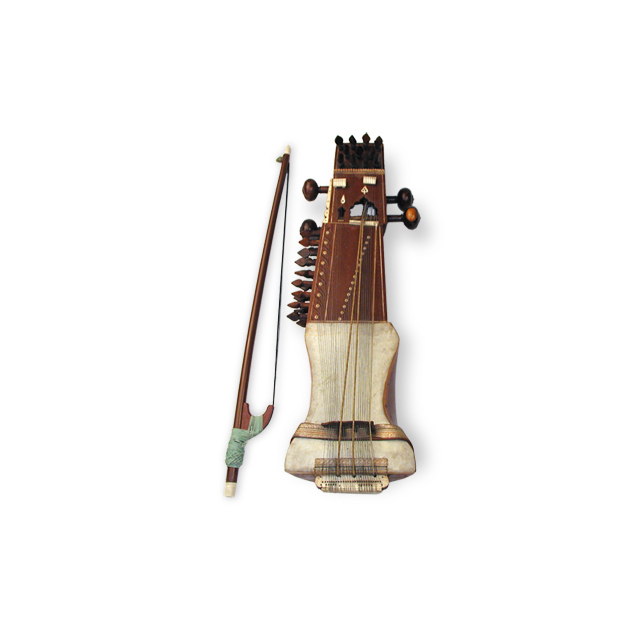
Sarangi, fiddle, with bow M8a-1988. The body, neck and pegbox carved from a single piece of wood (Cedrela toona?), the neck and pegbox open at the back. The instrument sparsely carved and inlaid in bone and black mastic with a few decorative motifs: a repeating pattern of tear-shaped 'botehs' and stylised trees. The vellum belly is protected by two horizontal straps of leather and braid: one beneath the feet of the wooden bridge and the other beneath the strings as they pass over the belly to the string holder at the base of the instrument. A wooden bar runs the length of the interior cavity, as in a spike fiddle. The neck with 23 pegs with heart-shaped finials for metal sympathetic strings which run to the bridge through holes in the front of the fingerboard. The upper section of the pegbox with 11 similarly shaped pegs frontally inserted for metal sympathetic strings which pass through a bone nut; six of the strings then pass over a bone upper bridge on the right-hand side of the pegbox and five pass over another upper bridge on the left-hand side of the pegbox. The lower section of the pegbox with 4 large turned pegs wooden pegs, one of them redundant, for 3 playing strings of goat gut which are raised from the surface of the fingerboard by means of a bone upper bridge. The 3 playing strings pass over the top of the wooden bridge standing on the belly and run to the string holder; the 34 sympathetic strings pass through holes in the wooden bridge and run to the string holder. With M8a-1988, sarangi bow of wood, the frog made of a separate piece of wood, bone head and fixed nut, black horsehair.







